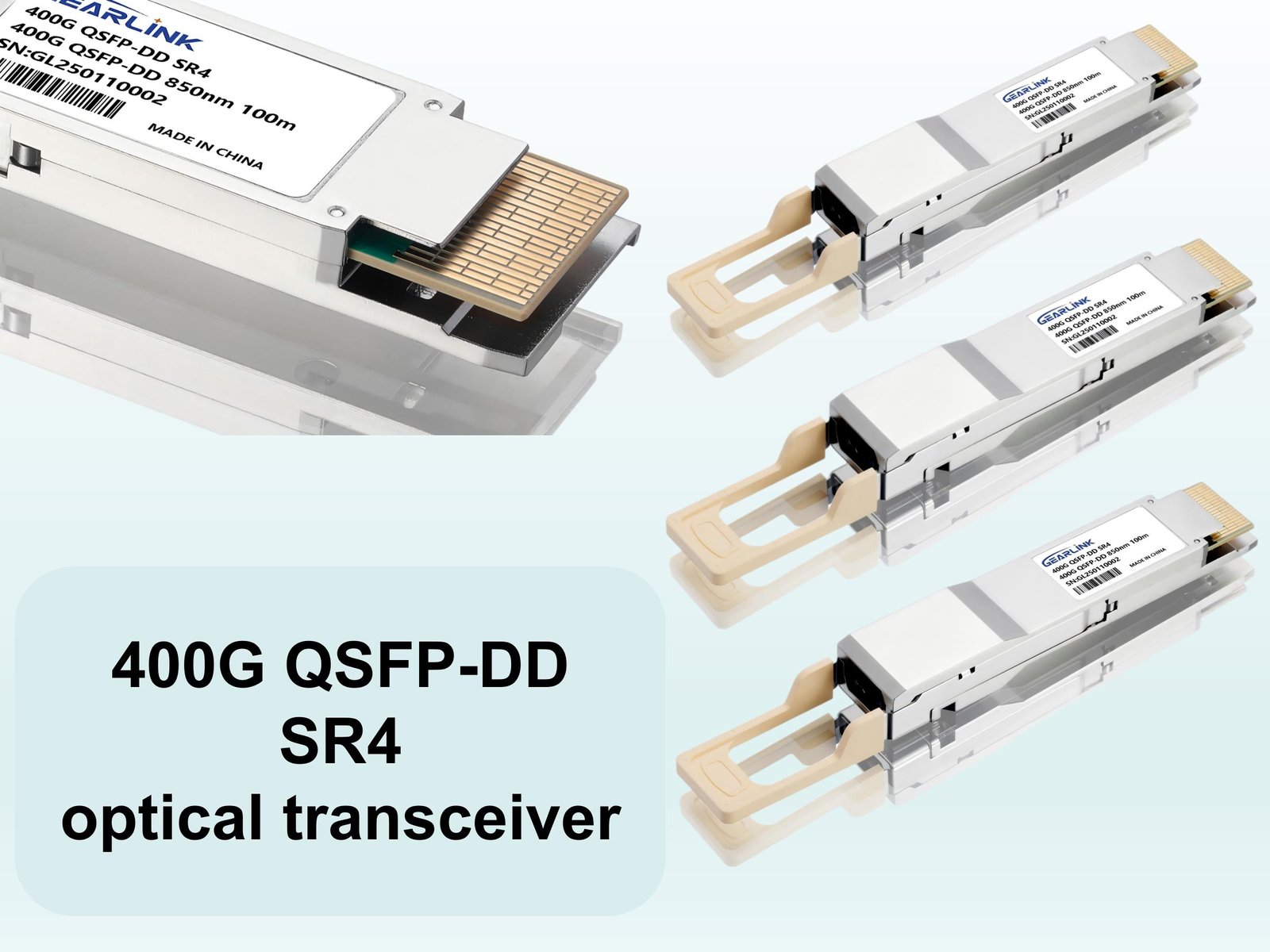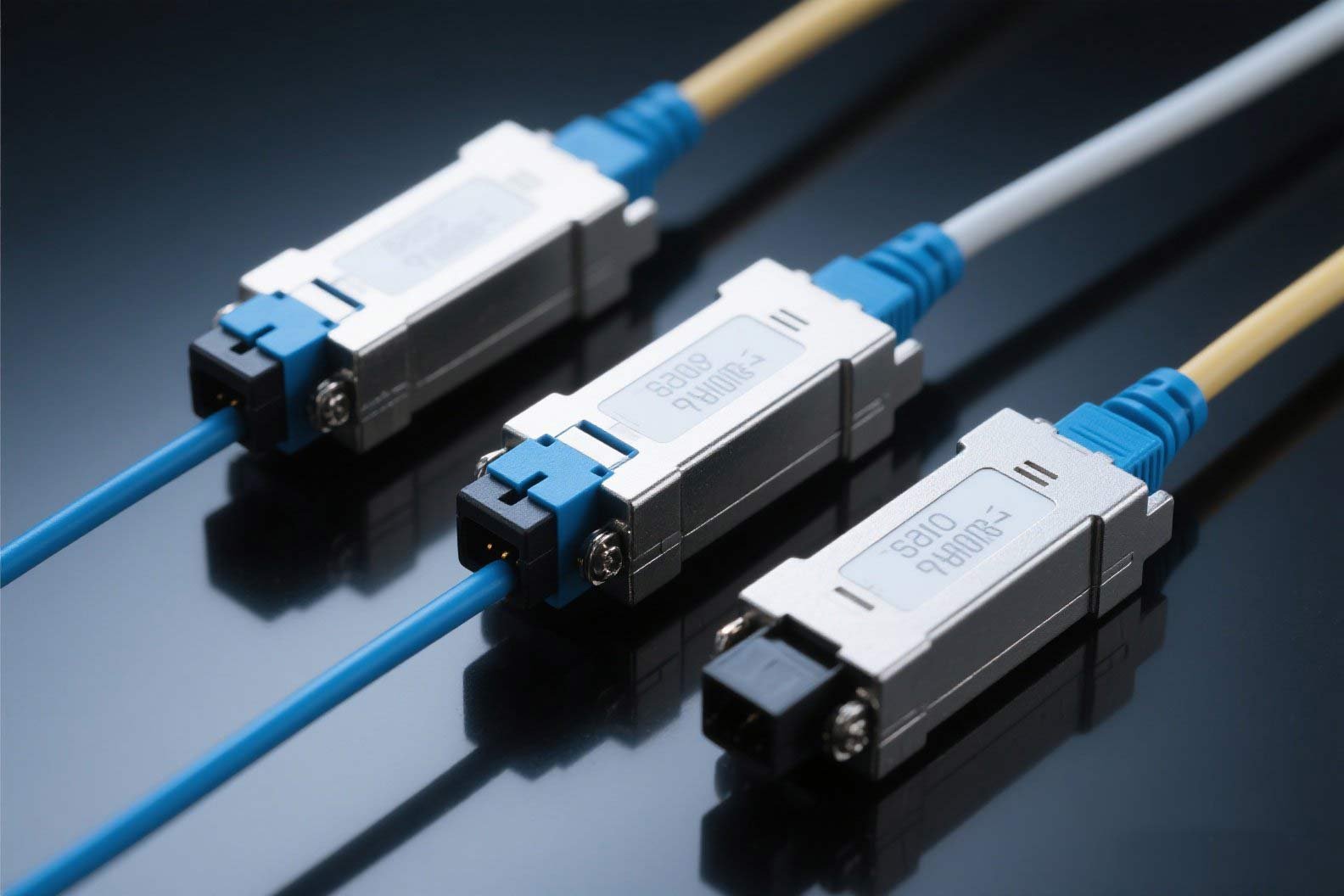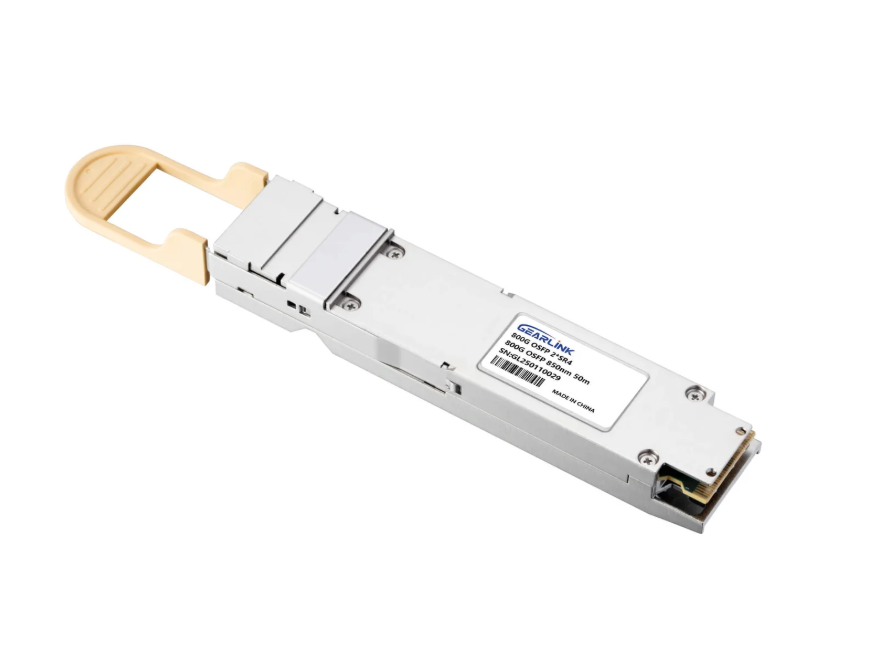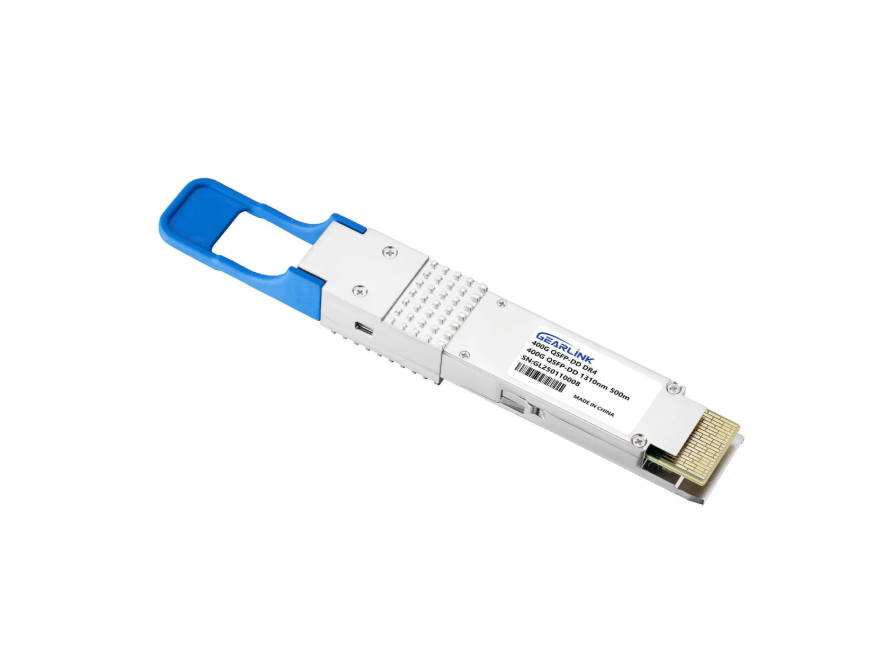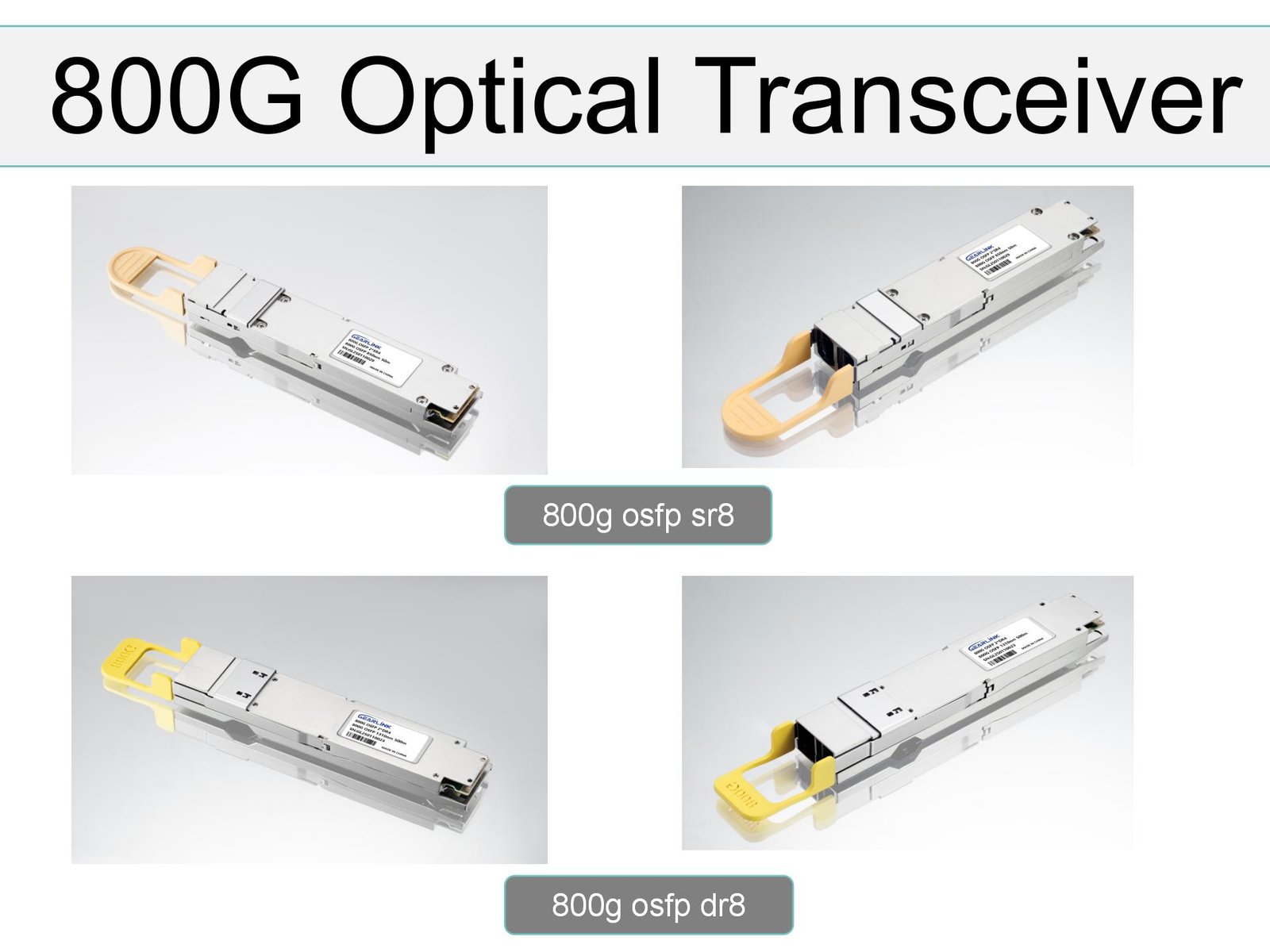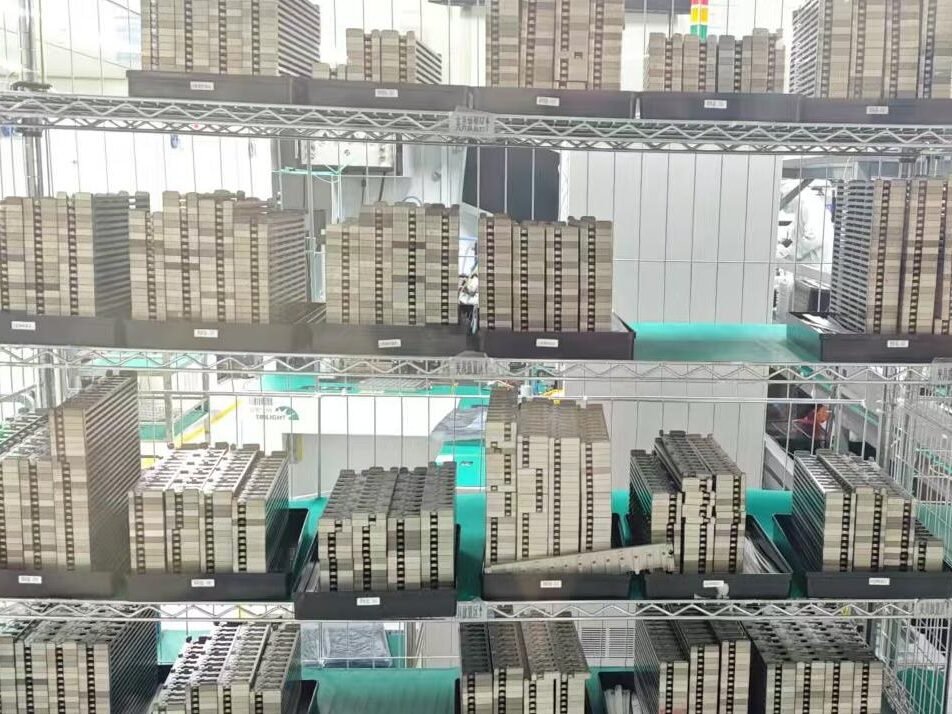Introduction to 400G QSFP DD SR4
The expansion of digital infrastructure is fueling unprecedented demand for ultra-high-speed connectivity. As data centers scale to meet the needs of cloud computing, 5G networks, and AI workloads, the 400G QSFP DD SR4 has emerged as a reliable and cost-effective solution for short-reach optical transmission.
A 400G QSFP DD SR4 transceiver is a pluggable optical module based on the QSFP-DD (Quad Small Form-Factor Pluggable Double Density) form factor. It delivers 400G Ethernet over parallel multimode fiber (MMF), supporting short-reach applications up to 100 meters on OM4 fiber. By combining high port density, excellent scalability, and compatibility with existing fiber infrastructure, it has become one of the most widely deployed solutions for next-generation networking.
Compared with previous generations such as QSFP28 and QSFP56, the QSFP DD SR4 offers twice the port density and higher aggregate throughput, helping operators maximize the efficiency of their data center resources. Variants such as QDD 2×100 SR4 S further enhance flexibility by supporting breakout configurations.
By meeting the needs of short-reach interconnections while keeping costs under control, the 400G QSFP DD SR4 has become an essential technology for modern cloud and enterprise networks.
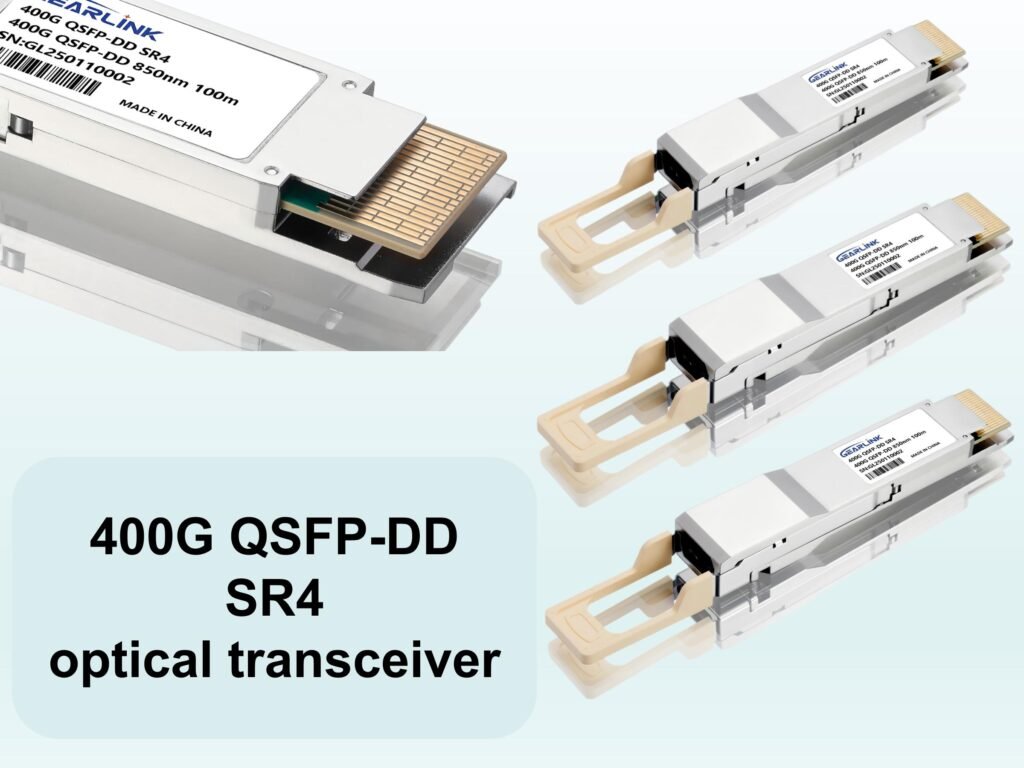
Technical Overview of 400G SR4 Transceivers
400G SR4 vs. 400GBASE SR4
The terms 400G SR4 and 400GBASE SR4 are often used interchangeably, but they represent slightly different concepts.
400G SR4 transceiver: Refers broadly to optical modules that support 400G short-reach transmission over multimode fiber.
400GBASE SR4: Specifically defines the IEEE 802.3cm standard for 400G Ethernet transmission. It ensures interoperability between different vendors’ products.
| Feature | 400G SR4 Transceiver | 400GBASE SR4 Standard |
| Definition | Product family supporting 400G SR4 transmission | IEEE specification for 400G Ethernet over MMF |
| Distance Support | Typically up to 100m (OM4) | 100m on OM4, 70m on OM3 |
| Interoperability | Vendor-dependent | Standardized and guaranteed |
Thus, while all 400GBASE SR4 modules are 400G SR4 transceivers, not all SR4 transceivers may meet the strict IEEE definition.
QSFP DD SR4 Module Specifications
The QSFP DD SR4 module integrates eight electrical lanes, each transmitting at 50Gbps PAM4, to achieve an aggregate data rate of 400Gbps. The optical interface is based on parallel multimode fiber, typically with MPO-12 or MPO-16 connectors.
Key specifications include:
Form factor: QSFP-DD (Double Density)
Modulation format: PAM4
Lane configuration: 8x50Gbps electrical, 4x100Gbps optical
Reach: Up to 100m (OM4), 70m (OM3)
Power consumption: Typically 7–10W
Hot-pluggable design: Ensures easy installation and maintenance
By adopting the QSFP-DD format, the 400G SR4 transceiver provides backward compatibility with earlier QSFP ports in certain breakout modes, maximizing investment protection.
QDD 2×100 SR4 S and Breakout Applications
The QDD 2×100 SR4 S is a variation of the QSFP DD SR4 module. Instead of providing a single 400G channel, it supports two independent 100G SR4 signals within the same physical transceiver.
This breakout capability offers several benefits:
Flexible resource allocation: One port can serve multiple 100G connections.
Cost efficiency: Eliminates the need for separate 100G modules.
Simplified cabling: Reduces the number of physical ports required in switches.
Therefore, the QDD 2×100 SR4 S has become widely adopted in scenarios where both 400G and 100G connections coexist in the same network.
Advantages of Using 400G QSFP DD SR4
High-Density Data Transmission
The 400G QSFP DD SR4 transceiver doubles the port density compared to QSFP28 and QSFP56 modules, enabling more bandwidth within the same rack space.
Compatibility with Existing Fiber
By using multimode fiber, the 400G SR4 allows operators to reuse their installed fiber infrastructure, avoiding expensive upgrades.
Lower Cost per Bit
Compared with long-reach solutions, the 400GBASE SR4 offers one of the lowest costs per bit for short-distance networking.
Energy Efficiency and Scalability
Power consumption is optimized for dense deployments, ensuring sustainable scaling of data center capacity.
Deployment Scenarios of 400G SR4 Transceivers
Data Centers and Cloud Computing
The majority of 400G QSFP DD SR4 modules are deployed inside hyperscale data centers to interconnect servers and switches.
Enterprise Networks
Enterprises with high-bandwidth demands adopt QSFP DD SR4 for reliable campus backbone connectivity.
AI and Machine Learning Clusters
AI workloads require massive east-west traffic. 400G SR4 transceivers are ideal for enabling GPU clusters with ultra-fast interconnects.
HPC (High-Performance Computing)
Supercomputing facilities rely on 400G SR4 modules to handle enormous volumes of scientific data in real time.
Comparison Table of 400G Optical Transceivers
| Module Type | Form Factor | Fiber Type | Max Reach | Use Case |
| 400G QSFP DD SR4 | QSFP-DD | MMF | 100m OM4 | Data centers, short-reach links |
| 400GBASE SR4 | QSFP-DD | MMF | 100m OM4 | IEEE-compliant Ethernet networks |
| QDD 2×100 SR4 S | QSFP-DD | MMF | 100m OM4 | Breakout: 2x100G links per module |
This comparison highlights the versatility of SR4 technology for multiple deployment scenarios.
Installation and Maintenance of QSFP DD SR4 Modules
Hot-Pluggable Design
The QSFP DD SR4 is fully hot-pluggable, allowing installation and removal without powering down equipment.
Fiber Cleaning and Handling Best Practices
Dust and contamination can degrade performance. Connectors should always be cleaned using proper fiber cleaning tools before insertion.
Common Troubleshooting Tips
Check fiber polarity
Inspect connectors for dirt or scratches
Verify compatibility with switches
By following these practices, the longevity and performance of 400G QSFP DD SR4 transceivers can be ensured.
Future of 400G SR4 and Beyond
The demand for higher data rates continues to grow, and while 400G SR4 is widely adopted today, networks are already preparing for 800G and 1.6T transceivers.
QSFP-DD vs. OSFP: While the QSFP-DD form factor dominates, OSFP is also gaining traction in 800G deployments.
Industry adoption: Cloud giants and telecom providers are driving large-scale adoption of 400GBASE SR4 today while testing 800G solutions for tomorrow.
Therefore, the 400G QSFP DD SR4 serves as a stepping stone toward even faster networking technologies.
Frequently Asked Questions (FAQ)
Q1: What is a 400G QSFP DD SR4 transceiver?
It is a high-speed pluggable optical module that supports 400G Ethernet transmission over multimode fiber for short-reach applications.
Q2: How does a 400G SR4 transceiver differ from 400GBASE SR4?
The 400G SR4 transceiver refers to the product category, while 400GBASE SR4 specifies the IEEE 802.3cm standard ensuring interoperability.
Q3: What applications use QSFP DD SR4 modules?
They are widely used in hyperscale data centers, enterprise backbones, AI clusters, and HPC environments.
Q4: What is the difference between QSFP DD SR4 and QDD 2×100 SR4 S?
QSFP DD SR4 provides one 400G channel, whereas QDD 2×100 SR4 S supports two breakout 100G SR4 channels.
Q5: Why choose a 400G QSFP DD SR4 over other 400G transceivers?
It offers high density, low cost per bit, energy efficiency, and compatibility with existing multimode fiber infrastructure.
Conclusion
The 400G QSFP DD SR4 transceiver is a cornerstone of modern networking. By supporting short-reach, high-density 400G Ethernet transmission, it addresses the needs of data centers, enterprises, and HPC clusters. With variations such as 400GBASE SR4 and QDD 2×100 SR4 S, this technology provides both standard compliance and flexible breakout options.
As the industry moves toward 800G and beyond, the QSFP DD SR4 will remain an essential solution for cost-effective, scalable, and sustainable short-reach connectivity.
